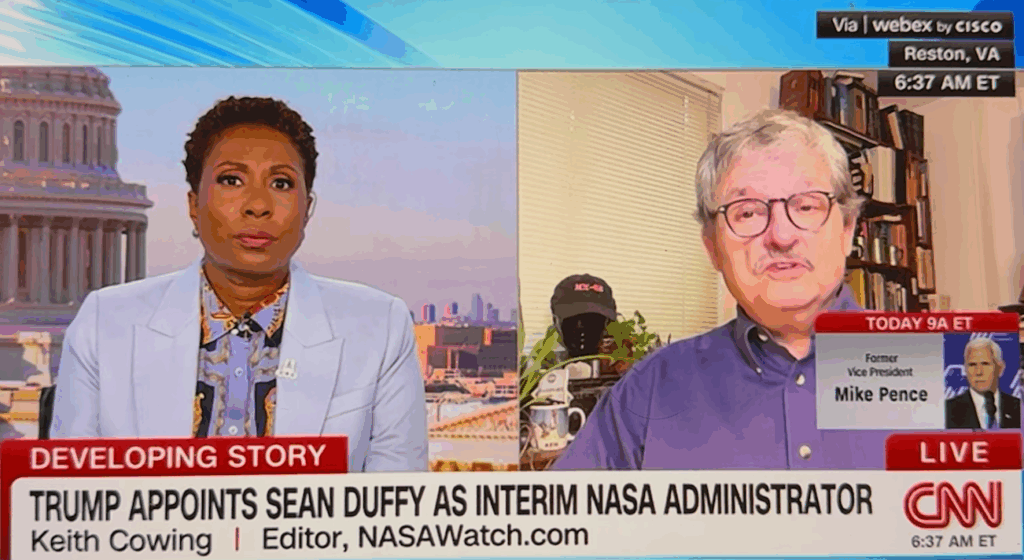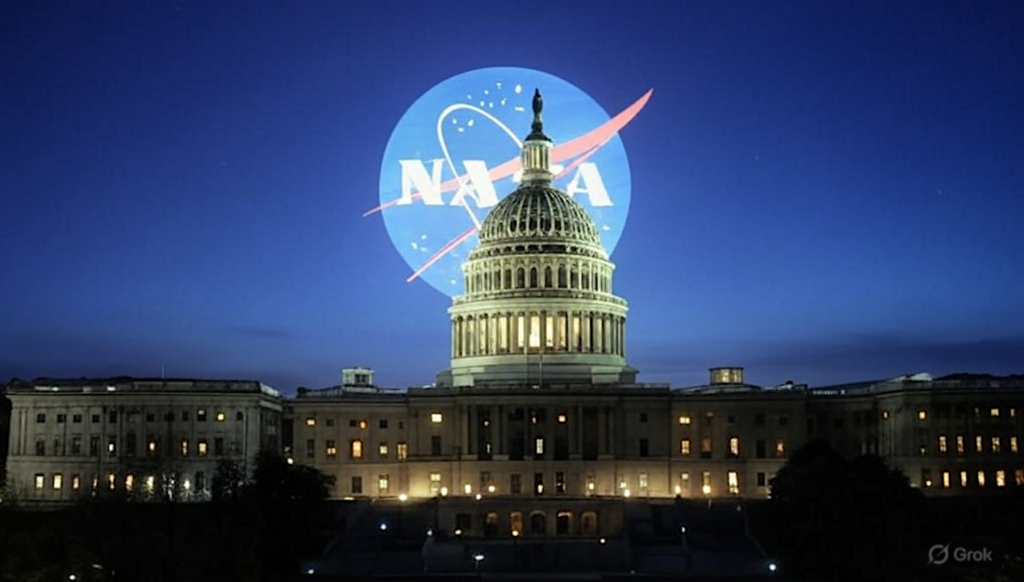MSL Cost Overruns: More Smoke and Mirrors from NASA

 Editor’s note: The following public exchange of letters regarding Mars Science Laboratory (MSL) cost overruns has been underway between former SMD Alan Stern and NASA HQ’s proxy, Jim Garvin from NASA GSFC for several weeks. Once again, Garvin attempts to play the standard NASA game of moving the goal posts with what amounts to selective semantic mathematics so as to try and decrease the true scope of MSL’s cost overrun. Stern, in response, uses Garvin’s own numbers and simple math to show that no matter how you try and cook the books, MSL’s cost has risen far more than NASA wants to admit.
Editor’s note: The following public exchange of letters regarding Mars Science Laboratory (MSL) cost overruns has been underway between former SMD Alan Stern and NASA HQ’s proxy, Jim Garvin from NASA GSFC for several weeks. Once again, Garvin attempts to play the standard NASA game of moving the goal posts with what amounts to selective semantic mathematics so as to try and decrease the true scope of MSL’s cost overrun. Stern, in response, uses Garvin’s own numbers and simple math to show that no matter how you try and cook the books, MSL’s cost has risen far more than NASA wants to admit.
To be certain, the MSL cost increase itself is troubling. Even more troubling, however, is the broader issue of NASA’s continued, coordinated attempt to misrepresent facts so as to hide the truth of how it calculates how much things actually cost – and what the costs actually are. Small wonder no one can ever complete a credible audit of the agency’s books. There is simply no way that this agency can expect – or be allowed – to continue to operate in such an irresponsible fashion.
Letters below:
 Editor’s note: The following letter from NASA GSFC’s Jim Garvin that appeared in both Space News and Science magazine in response to a letter by Alan Stern that appeared in Science magazine.
Editor’s note: The following letter from NASA GSFC’s Jim Garvin that appeared in both Space News and Science magazine in response to a letter by Alan Stern that appeared in Science magazine.
“NASA is in the final throes of implementing the most powerful surface reconnaissance mission ever undertaken to Mars. Dubbed the Mars Science Laboratory (MSL), it represents NASA’s first life inference mission equipped with instruments capable of detecting the chemical building blocks of life more than an order of magnitude more sensitive than those used by the Viking mission of the 1970s. MSL will also demonstrate multiple technical capabilities needed to enable a future robotic Mars sample return mission.
In his 31 October letter (to Science magazine) “Viewing NASA’s Mars budget with resignation,” former NASA Associate Administrator S. A. Stern suggested that excessive cost growth of MSL is deeply damaging NASA’s overall planetary exploration agenda and destroying the opportunity for a future Mars sample return mission. He blames senior NASA leaders for disbanding his MSL independent technical review team, which he claims forced his resignation.
Now is the time to set the record straight. NASA consolidated its independent standing review boards to streamline the process for all major flight programs in 2007. The MSL Standing Review Board remains in effect and was never disbanded.
Stern also claims that MSL was “assigned” a cost level of $650 million. He fails to mention when and by whom. The $650 million cost was a placeholder assigned to a medium-class Mars rover mission by the National Research Council Solar System Decadal Survey committee in 2002, before NASA had developed a basis of cost estimate for MSL. This served as input to NASA studies from 2000 to 2004 to fully define the MSL mission and culminated in the competitive selection of its science payload in late 2004.
At that time, the overall mission was baselined at a cost of $1.4 billion, not including several costs associated with the radioisotope power system. Given the experience with the cost of the Mars Exploration Rovers and the increased scientific and technical scope of the MSL mission, the so-called assigned value of $650 million is not credible. Stern’s own New Horizons flyby mission to Pluto cost NASA more than $650 million; it is unrealistic to expect that a 700-kg analytical laboratory that must soft-land on Mars and drive around with 100 kg of scientific instruments could possibly cost less than a planetary flyby mission.
Indeed, MSL’s 2 years of intensive surface science operations are difficult to compare to any missions in the $650 million price class given typical science-per-dollar metrics. The established NASA cost to implement MSL as of the time of its confirmation review was $1.55 billion (August 2006), which grew due to NASA-wide issues with thermal protection system materials in 2007 to approximately $1.7 billion. The total cost growth of the MSL mission development since NASA confirmed the mission is typical of other Mars exploration missions successfully flown over the past decade. The cost to fly MSL in 2009 will be less than the cost (in today’s dollars) of flying a nonmobile Viking Lander laboratory to Mars, and MSL includes a whole new generation of instruments and mobility.
NASA has an exemplary record of honoring its commitments to implement flagship-class missions that frequently “rewrite the textbooks” as they discover how the universe operates. To abandon MSL at this time would represent an unprecedented break with this guiding philosophy. As President John F. Kennedy once stated, we choose to do these things not because they are easy, but because they are hard. NASA succeeded with Apollo to the Moon, Hubble to the universe, and Cassini to Saturn. The agency is ready now to assault the martian frontier with MSL.
James. B. Garvin
Sciences and Exploration Directorate
NASA Goddard Space Flight Center
Greenbelt, MD 20771, USA
E-mail: [email protected]”
 Editor’s note: The following response was written by Alan Stern in response to Jim Garvin’s letter and is reprinted here courtesy of the author:
Editor’s note: The following response was written by Alan Stern in response to Jim Garvin’s letter and is reprinted here courtesy of the author:
“Dr. Garvin claims that MSL’s Cost to Go (CTG) review team, chartered by the Science Mission Directorate, was not disbanded. In point of fact it was disbanded by my superiors, over my objection and the objection of my Deputy for Flight Projects. Although the CTG review panel’s chair and one other member were then invited to join the MSL project’s Standing Review Board (SRB), neither agreed, citing the gutting of their review panel and their authority. Dr. Garvin’s Orwellian use of the word “consolidated” in describing this maneuver by the NASA Associate Administrator, who was intent on removing a committee whose results neither JPL nor NASA senior management wanted to hear (ironically, despite it’s on target assessment of how FY08 and early FY09 would unfold for MSL), is telling.
MSL’s cost increases far exceed Dr. Garvin’s quoted 6.5%, based on his quoted confirmation cost of $1.55B. Would it were that Dr. Garvin’s facts were only so, but they are not. It is documentable fact that, the mission was confirmed at $1.4B. But even forgiving that error and using Garvin’s own $1.55B number, primary school arithmetic shows us the corresponding increase to today’s $2.1B price tag is $550M, meaning an increase of over 26%. What new math corresponds to a 6.5% ($130M) rise to the current $2.1B? And what conscience allows the cost to inflate more than a factor of two from the NRC’s approved $650M level to the $1.4B confirmation level, or from there to today’s $2.1B level, without a revisit by the broadly based planetary science community who must bear the budget of these increases within their strained, fixed-level dollars effort?
Finally, Dr. Garvin claims that MSL’s original $650M cost, assigned by the NRC’s Planetary Decadal Survey when it ranked the mission high enough to proceed in 2003, was naive. I agree here: any mildly experienced scientific program manager could have recognized this fact. Yet neither NASA headquarters, nor the implementing NASA center (JPL), nor the Mars community, came forward then, pointing out this obvious disconnect. As a result, the NRC’s community based Planetary Decadal Survey ranked MSL highly at an advertised cost level of $650M. Had they known its ultimate cost would be in excess of triple that, and the consequent damage that would result to the rest of the US planetary program to fund such increases in a fixed-budget environment, I believe it is doubtful that MSL would have received the same high ranking. NASA, JPL, and the Mars community abused the NRC’s high recommendation for MSL by “running away” with the mission’s ambitions and cost after it received a high ranking at the $650M level. When retailers practice such predatory practices, it is called “bait and switch.”
MSL is a fine scientific mission, and I hope it works, for the fate of the US Mars program lies at its feet. But MSL has caused a great deal of damage to NASA’s broader planetary program: all that remains in hardware development are just one lunar and one outer planet mission; and by NASA’s own recent reckoning, even those two missions and portions of the planetary research and analysis programs which produce scientific discoveries are endangered now by MSL’s spiraling cost. The fact that talented NASA officials like Jim Garvin cannot even admit MSL project mistakes and honestly talk about lessons learned, instead substituting rationales for why projects that triple in cost should be continued as if there were no collateral damage and no consequences, speaks volumes about how severe the Agency’s cost control problems have become.
Alan Stern
Former Associate Administrator,
NASA Science Mission Directorate”








